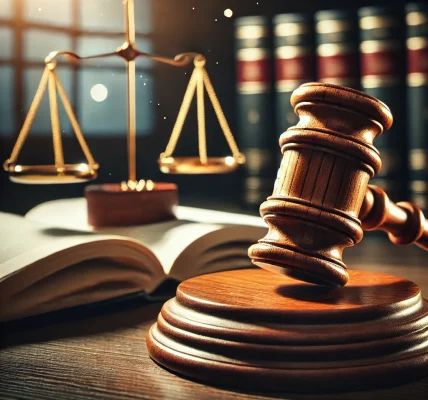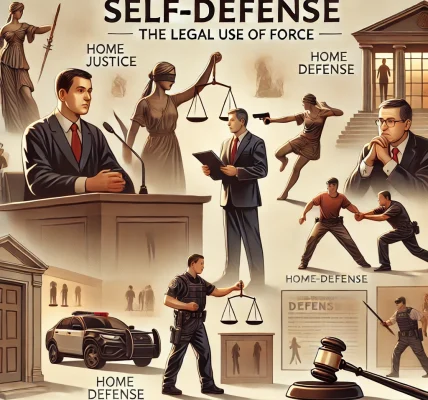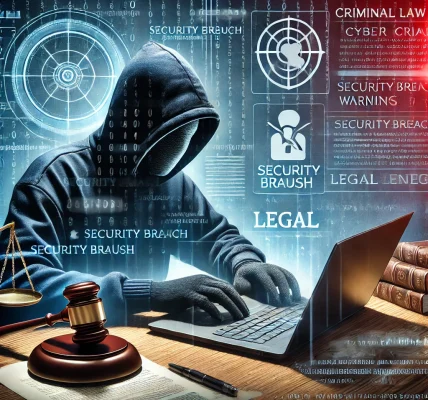Introduction
In criminal law, evidence plays a crucial role in determining guilt or innocence. The way evidence is collected, preserved, and presented in court can significantly impact the outcome of a criminal trial. Evidence can be physical, testimonial, documentary, or digital, and each type must meet strict legal standards to be admissible in court.
This blog explores how evidence is gathered, its role in criminal trials, and the legal principles governing its use to ensure a fair trial.
1. Types of Evidence in Criminal Trials
Evidence used in criminal cases falls into several categories:
A. Physical Evidence
This includes tangible objects such as:
- Weapons used in a crime (guns, knives, etc.)
- Fingerprints and DNA samples
- Bloodstains and bodily fluids
- Clothing or fibers linked to the crime
B. Testimonial Evidence
Testimonial evidence comes from individuals who provide statements or testimonies under oath. This includes:
- Witness statements
- Expert testimonies (forensic specialists, medical professionals, etc.)
- Defendant and victim testimonies (if admissible)
C. Documentary Evidence
Documents that help prove a case, such as:
- Contracts, letters, or emails related to the crime
- Financial records or bank statements
- Police reports and case files
D. Digital Evidence
With the rise of technology, digital evidence has become crucial. Examples include:
- CCTV footage
- Social media posts
- Phone call records and GPS data
- Hacked or retrieved emails and text messages
2. How Evidence is Collected
The collection of evidence follows strict legal procedures to maintain its integrity. Law enforcement officers and forensic teams handle evidence carefully to prevent contamination or tampering.
A. Crime Scene Investigation
Investigators follow specific steps to collect evidence from a crime scene:
- Securing the Scene – Officers establish a perimeter to prevent unauthorized access.
- Photographing & Documenting – The entire scene is photographed before evidence is moved.
- Collecting Physical Evidence – Items are gathered, sealed, and labeled properly.
- Chain of Custody – Each piece of evidence is logged and tracked to prevent mishandling.
B. Forensic Analysis
Forensic experts analyze evidence to extract crucial information:
- DNA Analysis: Determines genetic matches.
- Ballistics Tests: Identifies weapons and bullet trajectories.
- Toxicology Reports: Detects drugs, alcohol, or poisons.
C. Surveillance and Electronic Evidence Collection
Law enforcement agencies may collect electronic evidence by:
- Subpoenaing phone records or social media data.
- Using forensic software to retrieve deleted files.
- Conducting legal wiretaps with court approval.
3. The Legal Standards for Admissibility of Evidence
For evidence to be used in court, it must meet specific legal criteria:
A. Relevance
Evidence must be directly related to the case and help prove or disprove a fact.
B. Reliability and Authenticity
The source of the evidence must be credible, and its authenticity must be verified.
C. Legally Obtained Evidence
Evidence must be collected legally. Illegally obtained evidence (e.g., without a proper warrant) may be ruled inadmissible under the Exclusionary Rule.
D. Hearsay Rule
Hearsay (second-hand statements) is generally not admissible unless it falls under an exception, such as dying declarations or business records.
4. How Evidence is Used in Court
Once collected, evidence is presented in court through a structured process:
A. Pre-Trial Evidence Review
- Prosecutors and defense attorneys review the evidence.
- The judge may rule on motions to suppress certain evidence.
B. Presentation During Trial
- Physical evidence is shown to the jury.
- Witnesses provide testimonies and are cross-examined.
- Experts explain forensic findings.
C. Closing Arguments and Jury Deliberation
- Lawyers summarize how the evidence supports their case.
- The jury deliberates based on the presented evidence.
5. Challenges in Using Evidence in Criminal Trials
A. Contamination and Tampering
If evidence is mishandled or tampered with, it may become inadmissible.
B. Constitutional Violations
If law enforcement violates Fourth Amendment rights (protection against unlawful searches), evidence may be excluded.
C. Unreliable Witnesses
Human memory is fallible, and false testimonies can lead to wrongful convictions.
Conclusion
The collection and use of evidence in criminal trials is a highly structured process governed by legal principles designed to ensure fairness and justice. Whether physical, testimonial, documentary, or digital, evidence must be collected lawfully and presented correctly to be admissible in court. By understanding the role of evidence in criminal trials, both legal professionals and the general public can appreciate the importance of due process in achieving justice.



